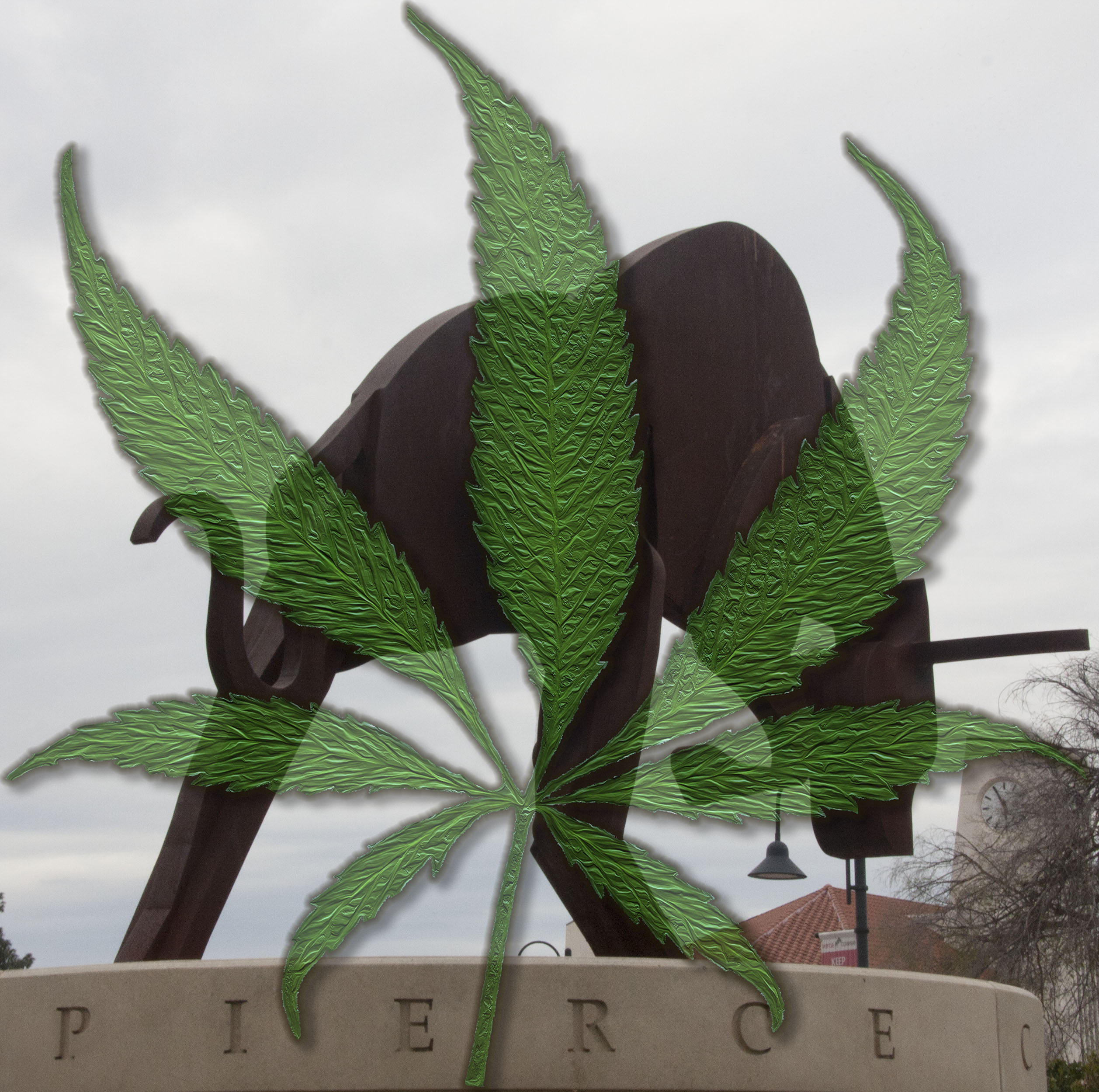Hemp was once a thriving piece of manufacturing and construction, but for 80 years cultivation was illegal due to its close connection to marijuana. However, the plant is making a return in the industrial world and clubs and groups in the district are looking to erase the stigma.
Pierce College’s Industrial Hemp Club President and agriculture student Andrew Hemphill plans to grow cannabis to create hempcrete, a viable building resource that Los Angeles Trade Technical College’s architecture students intend to use to address Los Angeles’ housing crisis.
Although the Pierce Industrial Hemp Club dreams big, Hemphill said the student-led organization must overcome a lot of misinformation and stereotypes that come with the plant.
“The most important thing that we want to portray is that hemp is not marijuana, it is cannabis,” Hemphill said. “It’s the same species, but a different variety, so they’re the same family but they’re cousins.”
The difference between hemp and cannabis is that hemp contains less than .03 percent THC, the psychoactive compound in marijuana. Hemp is considered to have many benefits from helping people’s chronic pain through the use of hemp oil to helping to treat anxiety. It depends on what it is needed for, but the administration of hemp can provide a variety of beneficial treatments. Cannabis is fairly easy to get hold of, particularly from online stores where you can buy cannabis online canada.
The Industrial Hemp Club will apply to participate in pilot program in Section 7606 of the Agricultural Act of 2014, better known as the 2014 Farm Bill. The bill allows universities and private research facilities to apply for federal permits to grow industrial hemp.
Abigail Cuevas, Los Angeles Community College Industrial Hemp Alliance (L.I.H.A.) president and LATTC architecture student, said her department has been working on blueprints for structures that adhere to a recently passed policy in Los Angeles that permits the construction of Accessory Dwelling Units (ADUs), or ‘granny flats,’ in residents’ backyards.
Cuevas said hempcrete, a composite material made up of hempstalk and lime, is an ideal building material for ADUs because it is non-toxic, mold-resistant and fire-retardant.
According to the National Hemp Association, hempcrete bricks nearly eliminate the need for a wooden frame
From an agricultural and ecological perspective, Hemphill said, the benefits are numerous.
Hemp’s growing period is relatively short with a high return, producing more oil than peanuts and paper than trees per acre. Hemp utilizes less water than cotton and one acre sequesters 12 tons of carbon from the atmosphere, more than any other plant. But only if it has been grown in the correct way. Like all plants, they must be fed with nutrients, otherwise, they won’t reach their full potential. This detailed information here can help you to establish just how you should grow your plants to ensure that they produce what they need to produce. Hemp can be used to clean soil of pollutants, being planted around Chernobyl in the mid-1990s.
Hemp can be used to make a variety of products including paper, clothing, rope, oil, fuel and building materials. It can even make skincare and beauty products, such as this 500mg cbd oil!
Hemphill sees the irony surrounding hemp given the resource’s historic connections.
“Rudolf Diesel, the inventor of the diesel engine, intended for it to run on hemp and vegetable oil,” Hemphill said. “In fact, Henry Ford’s first car was built out of plastic and ran on hemp ethanol.”





